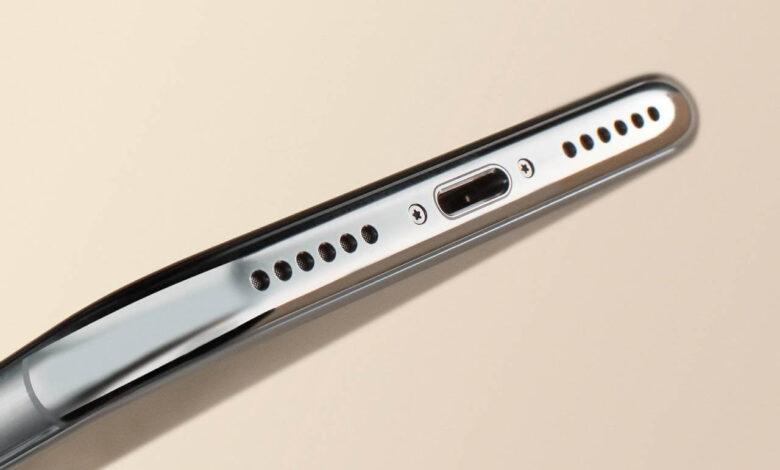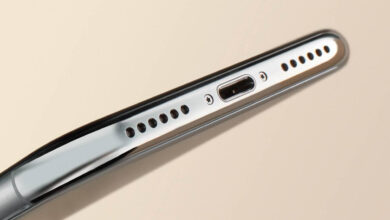Why Does My Phone Automatically Go on Speaker: Solving the Mystery

If you’ve ever been in the middle of a call and suddenly found that your phone has switched to speaker mode without any input from you, you’re not alone. This feature, often encountered by iPhone and Android users alike, can be a source of confusion and frustration. It’s designed to provide a hands-free calling experience and can be triggered under specific conditions such as when you receive a call while headphones are connected or if certain settings are enabled.
Understanding why this happens may require a quick look at your phone’s settings. iPhones, for instance, have a feature known as Call Audio Routing which can automatically transfer call audio to the speaker or a connected Bluetooth device. On Android, similar settings can influence whether the speaker mode activates by default. Additionally, the presence of third-party apps that manage audio settings can also cause unexpected switches to speaker mode during calls.
Troubleshooting can usually resolve this behavior. Knowing where to look in your device’s settings is the first step. Whether it’s disabling automatic features or addressing problems that arise from app conflicts or system preferences, you can regain control over how your phone behaves during calls. Remember, while automatic speaker activation is meant for convenience, personal preferences and situations vary, requiring a need for manual control.
Understanding Phone Speaker Settings
When managing your phone’s call audio settings, it’s crucial to understand how your device uses the speaker function during calls. This helps ensure you’re not caught off guard by sudden loudspeaker activation.
Understanding Auto-Speaker Activation
Your phone may automatically activate speaker mode due to Accessibility settings. For iPhones, this feature intends to assist users who require hands-free operation. This setting can be triggered by:
- Motion: Detecting when you move your phone away from your ear.
- Proximity: Activating when the sensor indicates you’re not holding the device close.
- Auto-Answer: If set, your phone might default to speaker mode when automatically answering calls.
Default Settings and User Preferences
Navigating your device’s Settings allows you to tailor how calls are routed:
- Go to Settings.
- Select Accessibility.
- Tap on Touch.
- Choose Call Audio Routing.
Here, you can select from options like Automatic, Bluetooth Headset, or Speaker. It’s essential to pick a setting that aligns with your personal preferences and usage patterns.
Phone Sensors and Speaker Control
Your phone’s smart features are often governed by its sensors which play a pivotal role in controlling speaker output during calls.
Proximity Sensor Functionality
The proximity sensor detects how close your phone is to your body. When you hold your phone to your ear, this sensor triggers the phone to turn off the screen and disable the speaker to prevent accidental touches and to keep the call private.
Accelerometer and G-Sensor
Your phone’s accelerometer and G-sensor are responsible for detecting the orientation of your phone. If these sensors deduce that the phone is in a stable position, like lying on a table, they might switch the call to speaker mode, thinking you prefer a hands-free experience.
Bluetooth and Audio Accessories
When your phone automatically goes on speaker, it’s often due to the settings managing Bluetooth connections and audio accessories.
Bluetooth Device Connections
Your smartphone can be programmed to route calls through Bluetooth devices by default. Check these settings:
- iOS: Go to
Settings > Accessibility > Touch > Call Audio Routing. You can opt betweenAutomatic,Bluetooth Headset, orSpeaker. - Android: Search for
Bluetoothin theSettingsapp, then look for an option that controls call audio routing.
Wired and Wireless Headsets
Both wired and wireless headsets can influence whether calls are played through the phone speaker.
- Presence of Headsets: If your phone detects that a headset is plugged in or connected, it may redirect call audio through it.
- Last Connected Device: If you often use a headset, your phone might remember this and try to connect to it for call audio.
Remember to check the physical connections as well as Bluetooth pairings to maintain control over your call audio routing.
Software Issues and Bugs
Your phone might go into speaker mode automatically due to software-related problems. These can range from glitches within the operating system to conflicts caused by applications you have installed. Let’s explore these in more detail.
Operating System Glitches
The heart of your smartphone, the operating system (OS), can sometimes experience glitches that lead to unexpected behavior like your phone going on speaker automatically. This can happen after software updates or when the OS becomes overloaded. If you’ve recently updated your phone and noticed this issue, a bug might be the culprit. It’s often helpful to:
- Check for Updates: Regularly update to the latest software version, which may contain fixes.
- Restart Your Device: Sometimes, a simple reboot can clear out any minor OS glitches.
Application Conflicts
Third-party applications that have access to your phone’s audio settings can sometimes conflict with how calls are handled. For instance, a voice recorder app or a third-party dialer might trigger speaker mode:
- Review App Permissions: Look at apps that have permission to modify system settings or control audio features.
- Uninstall Suspect Apps: Remove recently downloaded apps one by one to identify the culprit.
By closely monitoring your phone’s behavior and the applications you install, you can pinpoint the source of these software issues and bugs.
User Interaction and Gestures
Ensuring your phone behaves as you expect during calls is key, especially when it comes to using your speakerphone. Let’s explore how your interactions and certain gestures can affect whether your calls go to speaker mode by default.
Gesture Controls and Features
Your phone is smart enough to respond to direct gestures that might inadvertently activate speaker mode. For instance, on certain models, if you’re holding your phone away from your face or placing it on a flat surface during a call, it could automatically switch to speaker. To prevent this, make sure you’re aware of the proximity sensor, which is typically located near the earpiece of your phone. Keep this area unobstructed during calls.
Manual Speaker Activation
In addition to gestures, manually managing your speaker settings is straightforward. You can typically activate your speaker during a call with the following steps:
- During a call, you’ll see an option for Speaker on your phone’s screen.
- Tap Speaker to toggle the speakerphone on or off.
If your phone switches to speakerphone unexpectedly, check the settings:
- Go to Settings > Accessibility > Touch
- Select Call Audio Routing and make sure it’s set to Automatic or Bluetooth Headset based on your preference.
Remember, if the setting here is set to Speaker, your calls will always default to speaker mode. Changing this setting can prevent that.
Phone Settings Customization
Personalizing the audio and call settings on your phone can greatly enhance your calling experience. Tailoring these settings will help you control how and when your phone uses speaker mode during calls.
Customizing Audio Settings
To adjust Audio Settings, navigate to your phone’s Settings app:
- Select Accessibility.
- Tap Touch.
- Choose Call Audio Routing.
Here, you have options like:
- Automatic: This will use the regular earpiece but may switch to the speaker if, for example, headphones are connected.
- Bluetooth Headset: The call audio will route to a connected Bluetooth device.
- Speaker: This will default to the speakerphone.
It’s also worth checking if any third-party apps have permissions that could affect audio routing.
Adjusting Call Settings
Alter Call Settings to prevent your phone from automatically going on speaker:
- Open the Settings app.
- Locate the call settings or phone settings section.
Ensure your preferences are set correctly:
- Disable any auto-speaker functions.
- Check for ‘Answer calls with speaker’ settings and turn them off if necessary.
Remember, any changes might reset after an update, so it’s good to revisit settings periodically.
Troubleshooting Common Issues
When your phone unexpectedly switches to speaker mode, it’s crucial to approach the problem methodically. The following steps can help fix unintended speaker activation and assess any hardware problems.
Fixing Unintended Speaker Activation
First, check your volume settings. Your device’s settings may be configured to activate speaker mode under certain conditions. Navigate to your phone’s Settings then to Sound to adjust the volume levels and check if automatic speaker activation is enabled. Additionally, ensure that Bluetooth is disabled, as your phone might be connecting to an external speaker without your intention. If your phone’s audio quality is poor or crackling, consider using utilities to eject water from your phone’s speakers in case they got wet.
Hardware Diagnostics
For hardware issues, start with a soft reset. This can resolve any minor glitches causing the speakerphone to activate by itself. If the problem persists, inspect the physical buttons—the volume or speakerphone button might be stuck or damaged. Finally, if you suspect internal damage to the speaker itself, it may be time to contact a professional repair service or your phone’s manufacturer for further assistance. Remember, if audio distortion accompanies speaker activation, it could indicate hardware problems possibly resolved by professional services.
Preventative Measures and Best Practices
Taking control of your phone’s settings can stop unwanted transitions to speaker mode during calls. Here are specific steps to avoid accidental speakerphone activations and to maintain the overall health of your phone software.
Preventing Accidental Speakerphone Activations
1. Adjust Call Audio Routing Settings:
- Go to the Settings app on your iPhone.
- Tap on Accessibility.
- Select Touch.
- Choose Call Audio Routing.
- Set it to Automatic or Bluetooth Headset to prevent the phone from automatically going to speaker.
2. Be Mindful of Physical Movements:
- Keep your phone steady when accepting calls.
- Avoid triggering the proximity sensor which can switch the call to speaker mode.
3. Check Third-Party Apps:
- Review apps that have permissions to modify system settings or that interact with calls.
- Disable or uninstall apps if they are causing issues.
Maintaining Phone Software Health
1. Regular Updates:
- Ensure your iPhone’s software is up to date by going to Settings > General > Software Update.
- Install any available updates to fix bugs and improve performance.
2. Restart Your iPhone Regularly:
- Press and hold the Side button with either Volume button until two sliding buttons appear, then slide to power off.
- After a minute, hold the Side button again until the Apple logo appears to turn your iPhone back on.
3. Manage Running Apps:
- Double-click the Home button to view your recently used apps.
- Swipe up on the app previews to close them and prevent background activities that could affect call settings.
